Pothos are a type of houseplant that is known for being easy to care for. They can tolerate a wide range of light levels and can even survive in low light conditions. Snow Queen Pothos is a variety of pothos that is known for its white and green variegated leaves. If you are looking for a plant that is easy to care for and can brighten up any room, then a Snow Queen Pothos might be the plant for you!
Is the Snow Queen Pathos a Good House Plant to Grow?
The Snow Queen Pothos is a beautiful, easy-to-care-for houseplant that can brighten up any space. Although it is not a true succulent, the Snow Queen Pothos is a great choice for those looking for a low-maintenance plant that is still easy to care for. Here are a few tips on how to care for your Snow Queen Pothos:
-Place the plant in a bright, indirect light.

-Water the plant when the soil is dry to the touch.
-Fertilize the plant once a month during the growing season.
-Prune the plant as needed to keep it looking its best.
With just a little bit of care, your Snow Queen Pothos will thrive and bring a touch of beauty to your home.
Care Details Summarized
Snow Queen Pothos is a fast-growing, easy-to-care-for houseplant. It’s an ideal plant for beginners, as it is very tolerant of neglect. Here are the basics of Snow Queen Pothos care:
It will tolerate low light, but will grow slower. Light: Snow Queen Pothos does best in bright, indirect light.
Water: Water when the top inch of soil is dry. Allow the plant to drain thoroughly after watering.

Fertilizer: Fertilize monthly during the growing season with a balanced fertilizer.
Propagation: Snow Queen Pothos is easy to propagate from stem cuttings. Simply take a cutting, remove the bottom leaves, and place in water.
Pests and Diseases: Snow Queen Pothos is relatively pest and disease free. Watch for mealybugs and scale.
First Steps with Your New Plant
Here are a few tips to get you started: If you’ve just gotten a Snow Queen Pothos, congratulations! These beautiful plants are easy to care for, and make a great addition to any home.
First, choose a spot for your plant that gets bright, indirect light. Pothos do best in humid environments, so a bathroom or kitchen is a great option.
These plants are tolerant of a wide range of watering schedules, so don’t worry if you forget to water them occasionally. Next, water your plant regularly, letting the soil dry out slightly between waterings.
Finally, fertilize your Snow Queen Pothos every few months to help it stay healthy and vigorous. A balanced, all-purpose fertilizer will do the trick.

With just a little bit of care, your Snow Queen Pothos will thrive for years to come. Enjoy your new plant!
How to Care for Your Pothos Snow Queen?
Pothos plants are easy to care for, and the Snow Queen variety is no exception. Here are a few tips on how to care for your Snow Queen pothos: These beautiful plants are tolerant of a wide range of conditions, making them ideal for both beginner and experienced gardeners alike.
If your plant is placed in too much direct sunlight, the leaves may develop brown patches. Light: Snow Queen pothos prefer bright, indirect light but can tolerate low light conditions.
These plants are tolerant of both underwatering and overwatering, so don’t worry if you forget to water them occasionally. Just be sure to not let the soil stay soggy for extended periods of time, as this can lead to root rot. Water: Allow the top inch of soil to dry out before watering.
During the fall and winter, fertilize monthly. Fertilizer: Fertilize your Snow Queen pothos every two weeks during the growing season (spring and summer) using a balanced, all-purpose fertilizer.
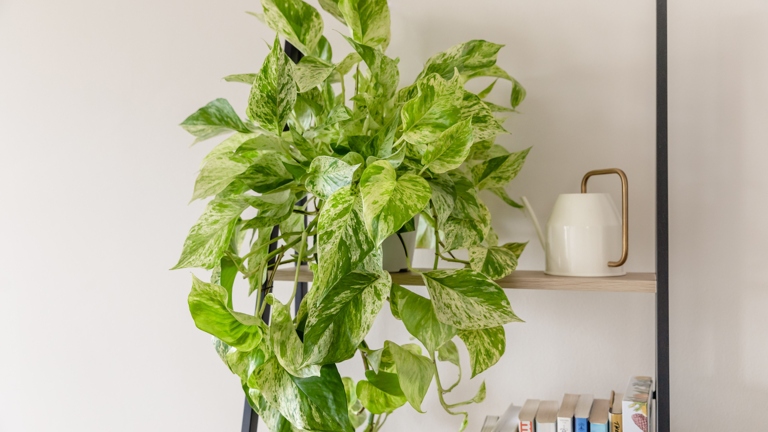
Pruning: These plants can become quite leggy over time. To keep them looking their best, prune them back as needed to encourage new growth.
With just a little bit of care, your Snow Queen pothos will thrive and bring beauty to your home for years to come.
Temperature
They can withstand temperatures as low as 50 degrees Fahrenheit and as high as 80 degrees Fahrenheit. If the temperature gets too hot, the leaves of the snow queen pothos will start to turn yellow. However, they prefer temperatures that are on the cooler side. When the temperature gets too cold, the leaves will start to turn brown. When it comes to temperature, snow queen pothos can tolerate a wide range of conditions.

Snow queen pothos can also tolerate a wide range of humidity levels. If the humidity level gets too low, the leaves of the snow queen pothos will start to turn brown. However, they prefer humidity levels that are on the higher side. They can withstand both high and low humidity levels.
Light
Light is a critical element of Snow Queen Pothos care. If you’re having trouble finding a spot that gets the right amount of light, a grow light may be a good option. This plant thrives in bright, indirect sunlight and will quickly lose its variegation if placed in too much shade. Too much direct sun will scorch the leaves, so be careful not to place it in a spot that gets too much direct sunlight.
However, it’s best to keep the soil evenly moist, especially during the growing season. When it comes to watering, the Snow Queen Pothos is pretty tolerant and can withstand periods of drought. Allow the top couple inches of soil to dry out before watering again. Over-watering can lead to root rot, so be careful not to water too often.

Fertilizing is not necessary, but if you choose to do so, use a weak fertilizer solution once a month during the growing season.
Watering
The best way to water your plant is to use lukewarm water and to water it deeply, but not too frequently. Over-watering can lead to root rot, so be sure to not water too often. Watering your Snow Queen Pothos is critical to its health and growth. Allow the soil to dry out in between watering.
Type of Water
Each type of water has its own benefits and drawbacks. There are many different types of water that you can use to water your plants.
Tap water is the most common type of water used to water plants. It is easy to obtain and usually has all the nutrients that plants need. However, it can also contain chemicals that can be harmful to plants.
It is free of chemicals and is rich in nutrients. Rainwater is a great alternative to tap water. However, it can be difficult to collect enough rainwater to water all of your plants.

It is usually high in minerals and nutrients, but it can also contain harmful chemicals. Well water is another option for watering plants.
Humidity
If the humidity level gets too high, the leaves will start to yellow and drop off. The Snow Queen Pothos is a beautiful, variegated plant that is easy to care for. If the humidity level drops below 40%, the leaves will start to turn brown and crispy. One of the most important things to remember when caring for this plant is to maintain a consistent level of humidity. The ideal humidity level for the Snow Queen Pothos is between 40-50%.
There are a few easy ways to increase the humidity around your Snow Queen Pothos. One way is to place the pot on a pebble tray. If you live in a dry climate, you may need to do both of these things to maintain the ideal humidity level. Another way is to use a humidifier.
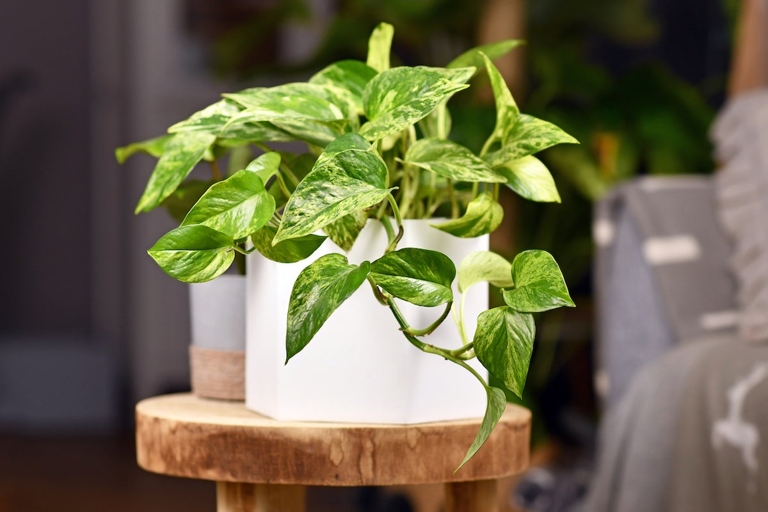
By following these simple tips, you can keep your Snow Queen Pothos healthy and happy for years to come. The Snow Queen Pothos is a beautiful plant that is easy to care for as long as you remember to maintain a consistent level of humidity.
Soil
If you are growing this plant in a pot, make sure that the pot has drainage holes to allow excess water to escape. Soil is an important part of any plant’s life, and the Snow Queen Pothos is no different. A potting mix that is specifically designed for epiphytic plants is a good option for the Snow Queen Pothos. This plant grows best in moist, well-drained soil that is high in organic matter.
The Snow Queen Pothos is not particularly picky about soil, but it does need a potting mix that is well-aerated. This plant does not like to sit in wet soil, so make sure that the potting mix is not too dense. A good potting mix will allow the roots of the plant to breathe while still holding onto moisture.
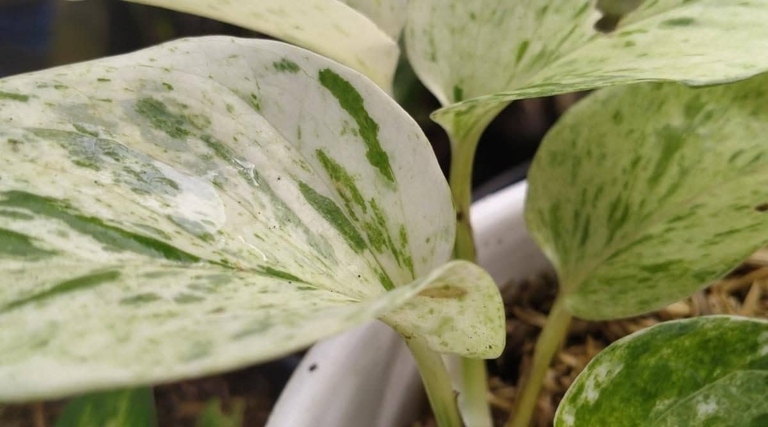
When it comes to soil, the most important thing for the Snow Queen Pothos is that the potting mix is well-drained. This plant does not like to sit in wet soil, so make sure that the potting mix is not too dense. A good potting mix will allow the roots of the plant to breathe while still holding onto moisture.
Fertilizer
A slow-release fertilizer is best, as it will provide a steady supply of nutrients to the plant. Be sure to follow the directions on the fertilizer package, as too much fertilizer can burn the roots of the plant. Fertilizer is an important part of pothos care. Apply fertilizer every two weeks during the growing season, and once a month during the winter. Pothos are heavy feeders and need a fertilizer that is high in nitrogen.
Propagation
All you need is a sharp knife and a little bit of know-how, and you’ll be on your way to growing a whole new plant in no time. One of the great things about Snow Queen Pothos is that they are very easy to propagate.
Make sure to cut the stem at an angle, about 1-2 inches below a leaf node. To propagate your Snow Queen Pothos, start by cutting a stem that has at least 2-3 leaves on it. Once you have your cutting, place it in a glass of water and put it in a bright, indirect light.
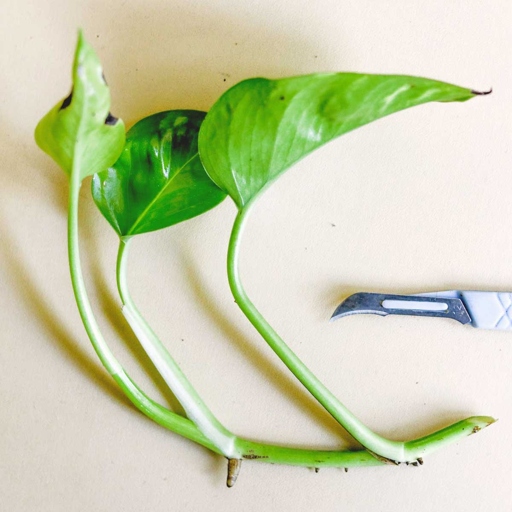
Once the roots are a few inches long, you can then pot your cutting in some fresh potting soil. Change the water every few days to keep it fresh, and in about 2-3 weeks you should see roots start to form. Give it a little bit of time to adjust to its new home, and then you’ll have a brand new Snow Queen Pothos plant!
Repotting
Repotting is necessary when the roots of your plant have outgrown their pot, and it’s a good idea to do it every one to two years. Pothos plants are easy to care for, and one of the most common questions we get is about repotting.
Here are a few tips for repotting your pothos:
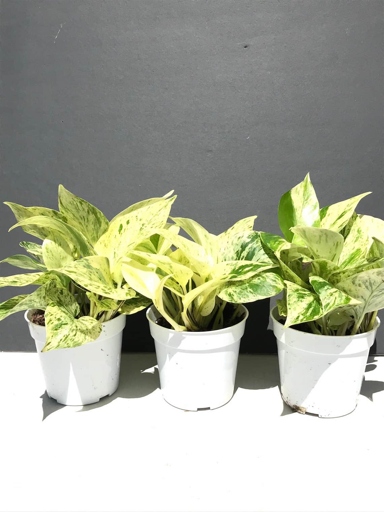
– Choose a pot that is only slightly larger than the current one.
– Use a well-draining potting mix.
– Water the plant well before repotting.
– Gently remove the plant from its pot and loosen the roots.
– Place the plant in the new pot and fill in with potting mix.
– Water the plant again and place in a bright, indirect light.
Pruning
Pothos are very easy to care for, and pruning is a simple way to keep them looking neat and tidy. Pruning is best done in the spring or summer when the plant is actively growing. Pruning your Snow Queen Pothos is a great way to keep it looking its best. You can also cut back any leggy stems to encourage new growth. To prune your Snow Queen Pothos, simply cut back any yellow or brown leaves with a sharp pair of scissors.
Flowering
Flowering is one of the most beautiful aspects of the Snow Queen Pothos. The flowers are followed by small, green berries. The flowers are white and fragrant, and they bloom in the spring and summer.
Common Snow Queen Pothos Problems
If you’re thinking about adding a Snow Queen Pothos to your indoor jungle, you might be wondering what kind of problems you might encounter. Here are some of the most common problems with Snow Queen Pothos care:
1. Overwatering. Overwatering can lead to root rot, which can kill your plant. This is probably the most common problem with Snow Queen Pothos care. When watering, make sure the soil is dry to the touch before watering again.
When watering, make sure the soil is moist but not soggy. Underwatering can cause the leaves to turn yellow and the plant to wilt. 2. This is the second most common problem with Snow Queen Pothos care. Underwatering.
Fertilizer burn will cause the leaves to turn brown and crispy. This can happen if you use too much fertilizer or if you fertilize too often. Fertilizer burn. If you think your plant has fertilizer burn, stop fertilizing and flush the soil with water to remove any excess fertilizer. 3.
Snow Queen Pothos are susceptible to mealybugs, aphids, and spider mites. If you see any of these pests on your plant, you can treat them with an insecticidal soap or neem oil. 4. Pests.
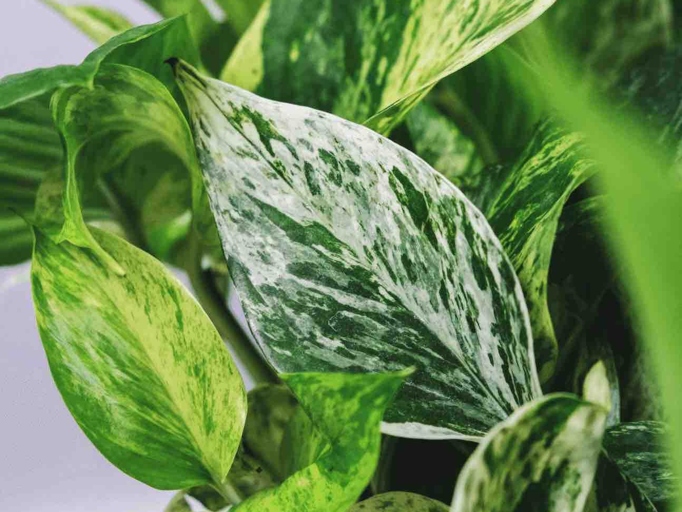
If you think your plant has a disease, you should isolate it from other plants and treat it with a fungicide. Disease. 5. Snow Queen Pothos can be susceptible to fungal diseases like powdery mildew and root rot.
Pests
Pests are a common problem for indoor plants, and Snow Queen Pothos is no exception. These pests can include aphids, mealybugs, spider mites, and scale. While most pests can be controlled with regular applications of insecticidal soap or neem oil, more serious infestations may require the use of chemical pesticides.
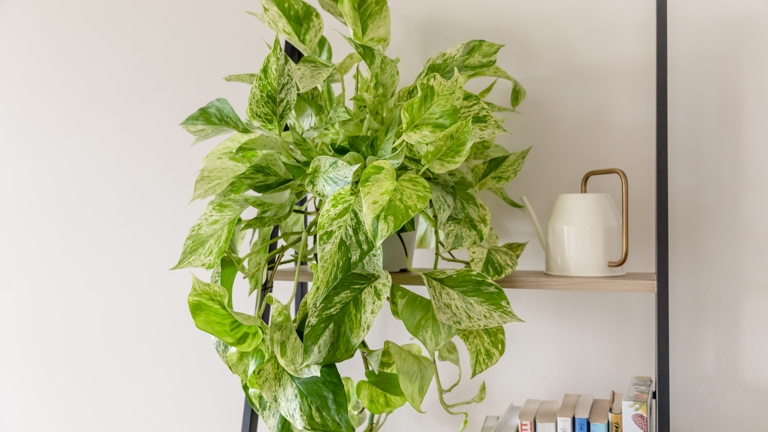
Scale are small, hard-bodied insects that feed on plant sap and can cause yellowing leaves and stunted growth. Spider mites are tiny, spider-like creatures that feed on plant sap and can cause stippling and discoloration of leaves. They feed on plant sap, and can cause stunted growth and distorted leaves. Aphids are small, soft-bodied insects that can be found in a variety of colors, including green, black, and brown. Mealybugs are small, white insects that feed on plant sap and can cause yellowing leaves and stunted growth.
If you suspect that your Snow Queen Pothos has pests, inspect the plant carefully. If the infestation is severe, you may need to treat the plant with an insecticide. If you see any pests, remove them by hand or with a cotton swab dipped in rubbing alcohol.
Thrips
They are attracted to the flowers and leaves of plants, and can cause damage by feeding on the plant tissue. Thrips are tiny, winged insects that are often found in greenhouses or on houseplants. Thrips can also transmit diseases from one plant to another.
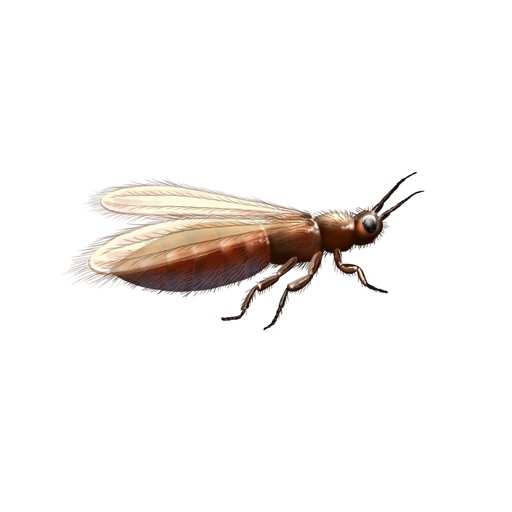
To control thrips, it is important to keep your plants clean and free of debris. Remove any dead leaves or flowers, and keep the area around your plants free of weeds. If you see thrips on your plants, you can remove them by hand or with a vacuum cleaner. You can also use an insecticide, but be sure to follow the directions carefully.
Mealy Bugs
Mealybugs can cause yellowing of the leaves, stunted growth, and even death of the plant. They are small, white, wingless insects that suck the sap out of plants. Mealybugs are one of the most common houseplant pests.
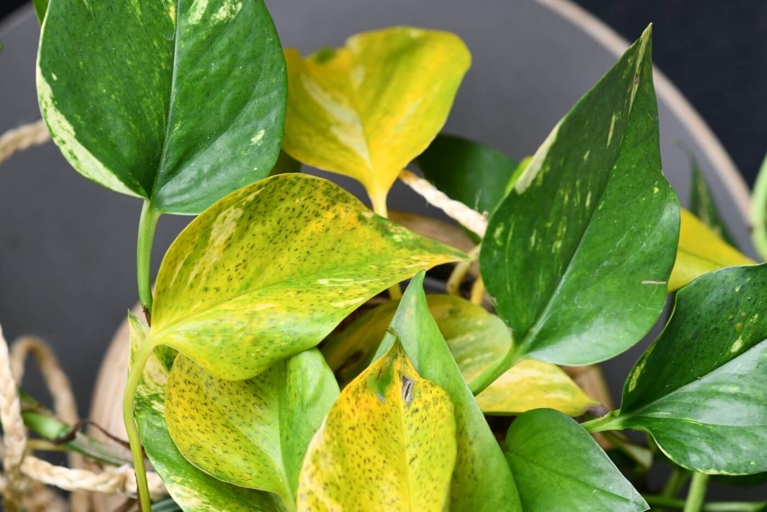
The best way to control mealybugs is to regularly inspect your plants and remove them by hand. You can also use an insecticidal soap or neem oil to kill them. Mealybugs are difficult to control because they reproduce quickly and they hide in the crevices of the plant.
Prevention
Pothos plants are very easy to care for, and with a little bit of preventative care, they can thrive for many years. Here are a few tips to keep your pothos plant healthy:
Place your pothos in a bright, indirect light. Too much direct sunlight can scorch the leaves, while too little light will cause the plant to become leggy and weak. 1.
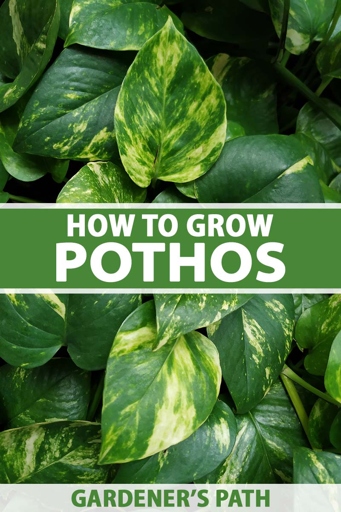
Water your pothos when the top inch of soil is dry. Allow the water to drain completely before putting the plant back in its pot. 2.
Feed your pothos every two weeks during the growing season with a balanced liquid fertilizer. 3.
Prune your pothos regularly to encourage new growth. 4. Cut back the stems to the desired length, and remove any yellow or brown leaves.
By following these simple tips, you can keep your pothos plant healthy and beautiful for many years to come.
Diseases
These include root rot, leaf spot, and stem rot. Pothos plants are relatively resistant to disease, but they can be susceptible to a few common problems.
Root rot is caused by too much moisture in the soil. You can then replant the pothos in fresh, well-draining soil. If you suspect your plant has root rot, remove it from the pot and inspect the roots. If they are brown and mushy, you will need to remove them. Symptoms of root rot include yellowing leaves, wilting, and stunted growth. This can happen if the plant is overwatered or if the pot does not have adequate drainage.
It is caused by a fungal or bacterial infection and results in small, dark spots on the leaves. Leaf spot is usually not serious and can be treated by removing infected leaves and spraying the plant with a fungicide. Leaf spot is another common problem for pothos plants.
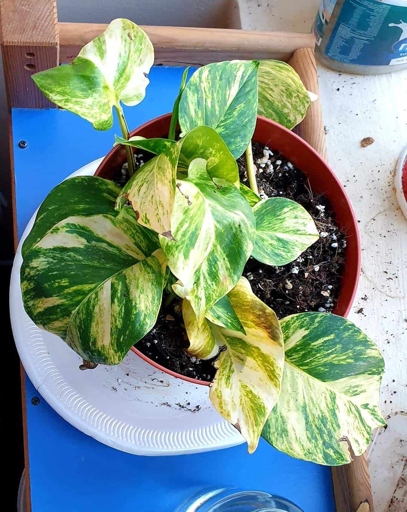
It is caused by a fungal infection and causes the stems to turn brown and mushy. If you suspect your plant has stem rot, cut away the affected stems and dispose of them. Stem rot is a serious disease that can kill a pothos plant. You can then treat the plant with a fungicide.
Bacterial Leaf Spot
The bacterium enters the plant through wounds or natural openings, such as stomata. They can appear on the leaves, stems, and even the flowers of the plant. The disease is caused by a bacterium, Pseudomonas cichorii, which lives in the soil and on the plant surface. Bacterial leaf spot is a common problem for snow queen pothos (Pothos epipremnoides). Once inside, it multiplies and spreads to other parts of the plant. The spots are small, dark, and often have a yellow halo.
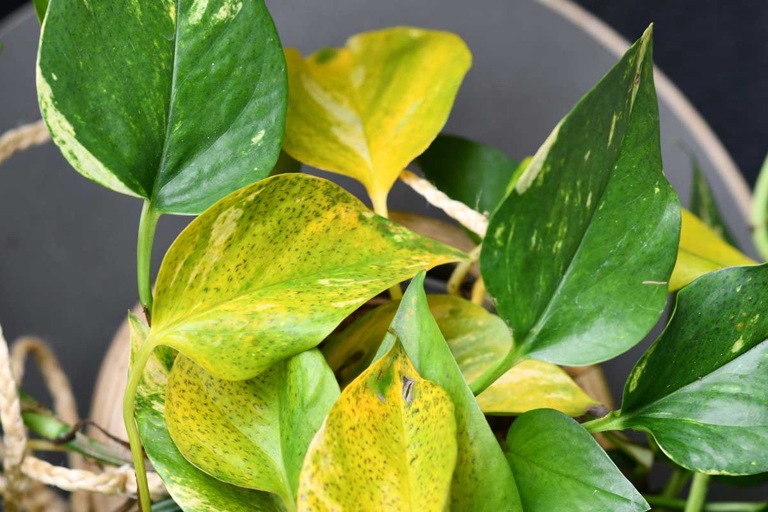
Bacterial leaf spot is difficult to control because the bacterium can overwinter in the soil and on plant debris. If the disease is severe, you may need to use a fungicide. The best way to prevent the disease is to avoid wounding the plant and to remove any infected leaves or stems.
Root Rot
Root rot can be difficult to control, and it is often fatal to the plant. It is caused by a build-up of water in the soil, which creates an environment that is conducive to the growth of harmful bacteria and fungi. Root rot is a serious problem that can affect any type of plant. These organisms attack the roots of the plant, causing them to rot.
Finally, if you do notice any signs of root rot, such as yellowing leaves or stunted growth, remove the affected plant from the soil and dispose of it immediately. There are several things that you can do to prevent root rot from occurring in your plants. Third, avoid using too much fertilizer, as this can also contribute to the problem. Second, water them regularly, but do not over-water them. First, make sure that you plant them in well-drained soil.
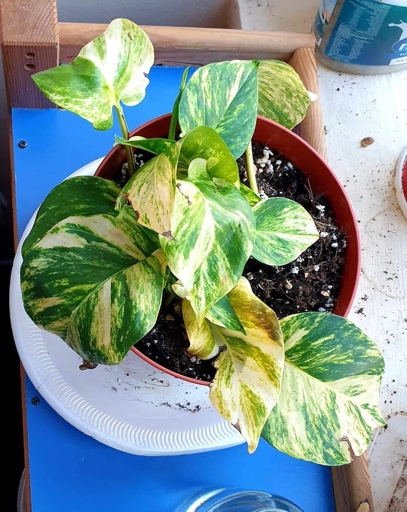
Root rot can be a serious problem for any gardener. By following these simple tips, you can help to prevent it from occurring in your own garden.
Black Spots on Leaves
The best way to control this disease is to remove affected leaves and destroy them. You can also treat the plant with a fungicide that is labeled for use on Alternaria. If you notice black spots on the leaves of your Snow Queen Pothos, it is likely due to a fungal disease called Alternaria. This disease is caused by a fungus that lives on the surface of the leaves and produces spores that can spread to other plants.
Leaves Turning Yellow
If you notice that your Snow Queen Pothos leaves are turning yellow, there are a few things you can do to try and fix the problem. When leaves turn yellow, it can be a sign that something is wrong with your plant.
If the soil is too wet, allow the soil to dry out before watering again. First, check the soil to see if it is too dry or too wet. If the soil is too dry, water your plant more frequently.
Next, check for pests. If you see any pests on your plant, remove them immediately.
If your plant is not getting enough light, move it to a brighter location. Finally, check the amount of light your plant is getting.
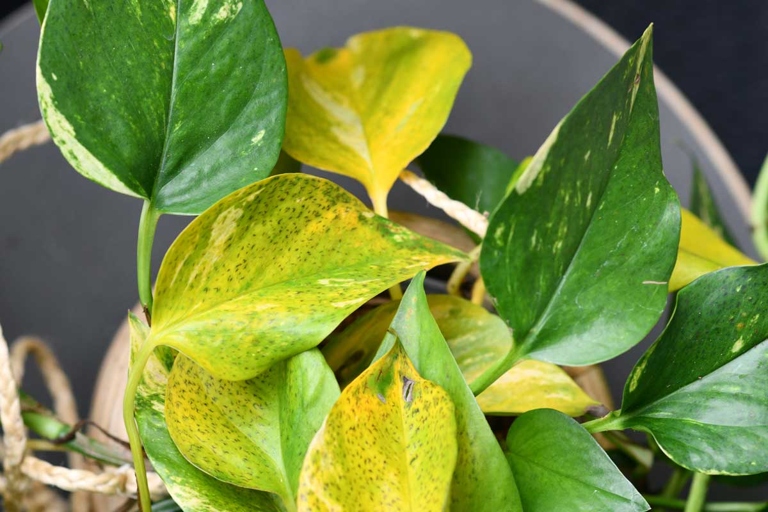
If you follow these steps and your plant still does not improve, you may need to replant it in fresh soil.
Leaves Curling and Turning Dry
There are a few possible causes, including too much or too little water, too much sun, or pests. Leaves curling and turning dry is a common problem with Snow Queen Pothos.
Snow Queen Pothos can tolerate a wide range of watering schedules, but too much or too little water can cause the leaves to curl and turn dry. If the plant is not being watered often enough, try increasing the frequency. If the plant is being watered too often, try reducing the frequency. If the leaves are curling and turning dry, it is important to check the plant’s watering schedule.
Snow Queen Pothos prefers bright, indirect light, so if the plant is in direct sunlight, try moving it to a location with more indirect light. Too much sun can also cause the leaves to curl and turn dry.
Pests can also cause the leaves to curl and turn dry. If the plant is infested with pests, it is important to treat the plant with an appropriate insecticide.
Brown Spots on Leaves
It could be a sign of too much sun exposure, or it could be a reaction to a new type of fertilizer you’ve started using. Alternatively, the brown spots could be caused by a fungal or bacterial infection. If you notice brown spots on the leaves of your Snow Queen Pothos, there are a few possible explanations.
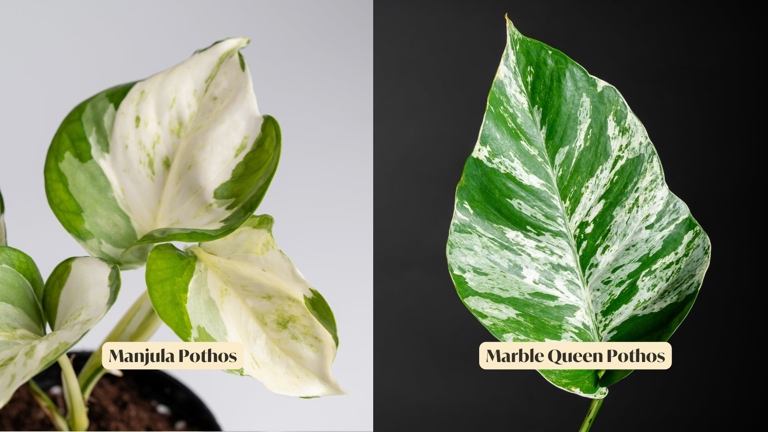
If you think the brown spots are due to sun exposure, try moving your plant to a spot with less direct sunlight. If the brown spots don’t go away, or if they start to spread, it’s best to consult a professional. They will be able to diagnose the problem and recommend the best course of treatment. If you suspect the brown spots are due to a new fertilizer, stop using it and see if the spots disappear.
Toxicity
Pothos plants are known to be relatively tolerant to a wide range of conditions, but they can still be susceptible to toxicity. If your pothos plant starts to experience any of the following symptoms, it may be suffering from toxicity:

-Leaves that are discolored or have brown spots
-Leaves that are wilting or drooping
-Stunted growth
-Bumps or lesions on the leaves
If the plant is being grown in a pot that is lined with toxins, you will need to replace the pot. If you suspect that your pothos plant is suffering from toxicity, the first step is to identify the source of the problem. If the plant is being grown in soil that is contaminated with toxins, you will need to replace the soil and wash the roots of the plant thoroughly.
If the plant does not recover, you may need to dispose of it. Once you have removed the source of the toxicity, you can try to nurse the plant back to health by giving it plenty of water and light.
Final Care Tips
When you’re ready to give your Snow Queen Pothos its final care, there are a few things to keep in mind. First, make sure the plant is in a well-lit spot, but not in direct sunlight. Second, water the plant when the soil is dry to the touch. Finally, fertilize the Snow Queen Pothos every other week during the growing season. With a little care, your Snow Queen Pothos will thrive for years to come!
Key Takeaways
Pothos plants are easy to care for, making them a great choice for beginner gardeners. Here are some key takeaways for caring for your snow queen pothos:
If you live in a colder climate, you may need to provide your plant with artificial light. -Pothos plants prefer bright, indirect sunlight.
-Pothos plants like to be kept moist, but not soggy. Allow the top inch of soil to dry out before watering again.
-Pothos plants are not heavy feeders, so you only need to fertilize them once or twice a year.

-Pothos plants are relatively resistant to pests and diseases, but watch out for mealybugs, spider mites, and root rot.
With just a little bit of care, your snow queen pothos will thrive and bring you joy for many years to come.
Frequently Asked Questions
1. How do I care for a Snow Queen Pothos?
To care for your Snow Queen Pothos, water it when the soil is dry and give it bright, indirect light. You can fertilize it monthly during the growing season.
2. How often should I water my Snow Queen Pothos?
Water your Snow Queen Pothos when the soil is dry.
3. What kind of light does a Snow Queen Pothos need?
Snow Queen Pothos needs bright, indirect light.
4. Can I fertilize my Snow Queen Pothos?
You can fertilize your Snow Queen Pothos monthly during the growing season.
5. What is the best way to propagate a Snow Queen Pothos?
The best way to propagate a Snow Queen Pothos is by stem cuttings.
6. What are the common problems with Snow Queen Pothos?
The common problems with Snow Queen Pothos are overwatering, insufficient light, and mealybugs.
7. How do I know if my Snow Queen Pothos is overwatered?
If your Snow Queen Pothos is overwatered, the leaves will be yellow and wilted.
8. How do I know if my Snow Queen Pothos is getting enough light?
If your Snow Queen Pothos is not getting enough light, the leaves will be pale.
9. What are mealybugs and how do I get rid of them?
Mealybugs are small, white, fuzzy insects that feed on plant sap. To get rid of them, you can use an insecticidal soap or neem oil.
10. Where can I buy a Snow Queen Pothos?
You can buy a Snow Queen Pothos at your local nursery or garden center.
Final thoughts
Pothos plants are easy to care for, making them a great choice for beginner gardeners. With a little bit of care, your Snow Queen Pothos will thrive and provide you with beautiful, variegated leaves.
